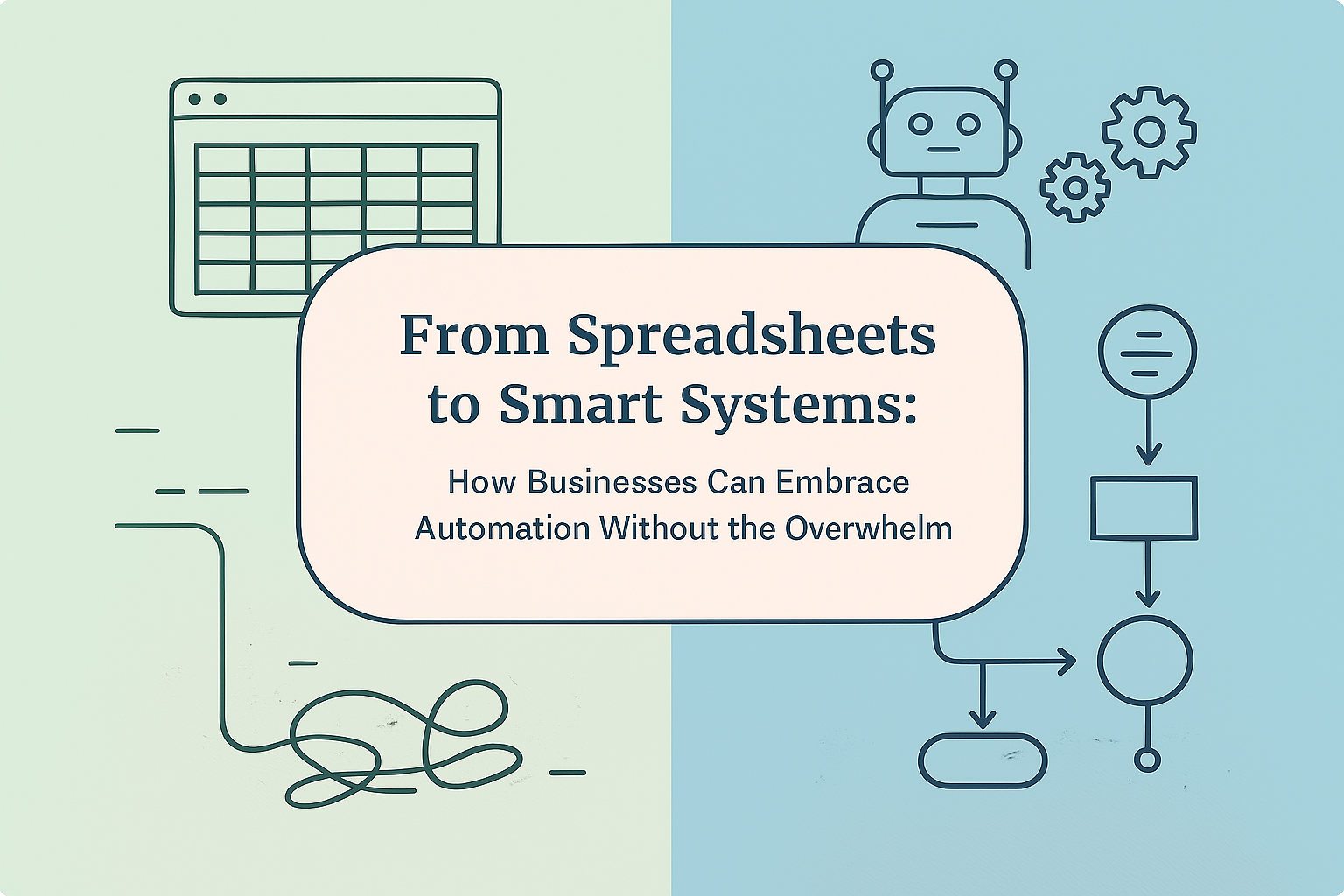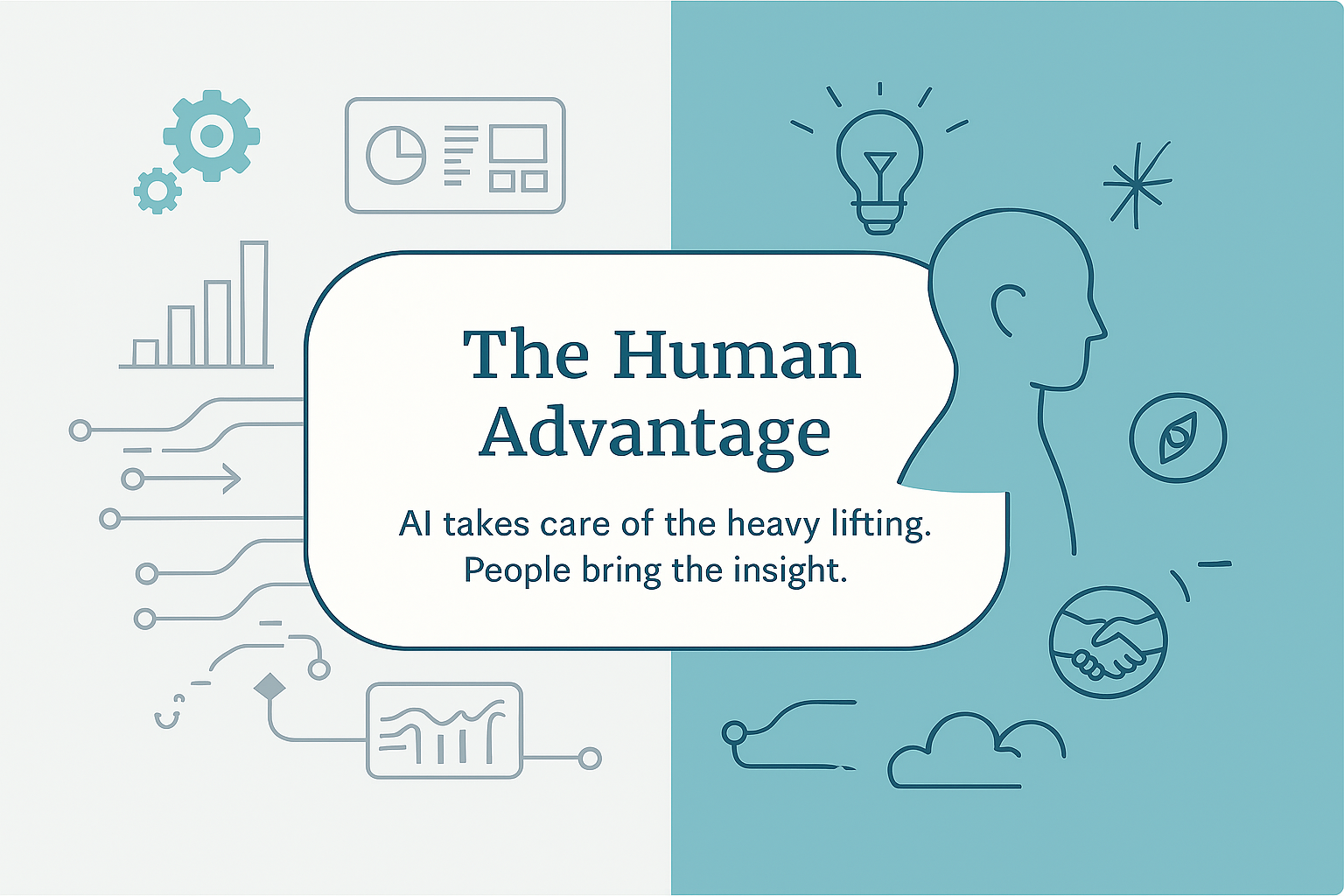For years, spreadsheets have been the backbone of small and medium-sized businesses (SMEs). They track finances, projects, customers, and just about everything else. They’re flexible, familiar, and cost-effective. But as businesses grow, what once worked begins to show its limits.
Spreadsheets can become messy, error-prone, and time-consuming. Teams spend hours updating cells, chasing the latest version of a file, and fixing mistakes that slip through unnoticed. What starts as a tool for clarity can quickly turn into a source of chaos.
The good news? There’s a better way. And it doesn’t mean throwing everything out and starting from scratch. It means moving from spreadsheets to smart systems.

Why Spreadsheets Hold Businesses Back
Spreadsheets are great for individuals, but as soon as multiple people rely on them, problems multiply. Version control issues, hidden errors in formulas, and endless duplication of work become everyday headaches. In fast-moving industries, those delays cost more than time - they cost opportunities.
What Smart Systems Offer
Smart systems use automation and AI to do the heavy lifting. Instead of manually updating rows and columns, data flows automatically between tools. Instead of relying on one person to keep everything updated, information is shared instantly across teams. Smart systems:
- Reduce human error by validating data at entry
- Save hours by automating repetitive updates
- Integrate directly with platforms like Xero, HubSpot, or SharePoint
- Give real-time visibility into performance, without waiting for someone to “finish the spreadsheet”
The Human Advantage
Automation doesn’t remove people from the process - it elevates them. By moving routine admin into smart systems, employees spend less time firefighting and more time on strategy, client relationships, and innovation. Spreadsheets keep the lights on. Smart systems help businesses grow.

How to Make the Shift
The idea of moving away from spreadsheets can feel overwhelming. But the transition doesn’t have to be all or nothing. Start small. Identify the processes where spreadsheets cause the most frustration - maybe it’s invoice tracking, project timelines, or customer records. Automate those first. Show the quick wins. Then build from there.
Final Thought
Spreadsheets aren’t going away completely - they’ll always have their place. But for SMEs that want to scale, relying on them alone creates bottlenecks. By shifting to smart systems, businesses don’t just save time; they unlock the potential of their people.
At fiftyminds, we help SMEs make that transition without the overwhelm - designing systems that fit your business, not the other way around.
Ready to move from spreadsheets to smart systems? Contact us today.
From Spreadsheets to Smart Systems: How Businesses Can Embrace Automation Without the Overwhelm
For years, spreadsheets have been the backbone of small and medium-sized businesses (SMEs). They track...
5 Everyday Tasks AI Can Do Better | (So Your Team Doesn’t Have To)
Every week, businesses hear the same story: “AI is coming for your jobs.” But the...
The Human Side of AI: Why People Still Matter More Than Ever
Every week, new headlines warn us that “AI is coming for our jobs.” It’s an...
Bridging the Skills Gap: How Businesses can upskill for AI and Automation
AI and automation are no longer “emerging technologies.” They’re here, shaping how businesses operate, cut...
The Hidden Cost of Manual Processes -And How AI Pays for Itself
For many small and medium-sized businesses (SMEs), admin feels like an unavoidable part of the...
How AI and Automation are Reshaping Efficiency in Construction
Lorem Ipsum has been the industry’s standard dummy text ever since the 1500s. In construction,...
